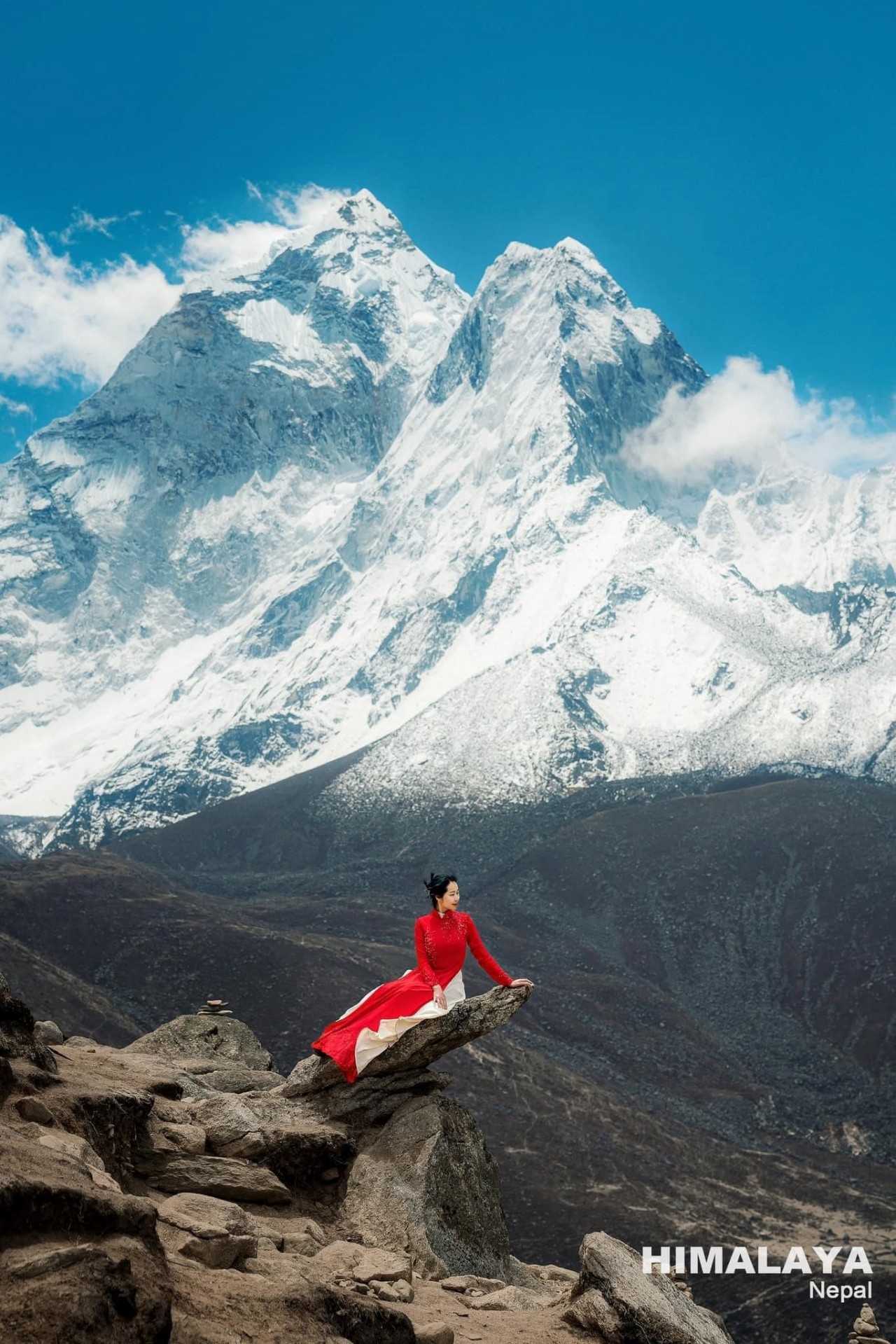“Autumn On The Alps”: Gorgeous Photographs Taken By Polish Photographer
Polish photographer, Karol Nienartowicz, offers a breathtaking series of his photos captured in the highest European mountains – the Alps. Began taking photographs of the mountains at a young age, Karol has a great passion for traveling and photography.
“I spend several dozens of days per year hiking in mountains, during which I overcome up to 1,000 miles of trails. I’ve visited and photographed more than 20 European countries. I’ve photographed the Polish, Slovakian, Romanian and Ukrainian Carpathians, the Alps in Switzerland, France, Austria, Italy, Germany, and Slovenia, the mountains of Albania, Bosnia, and Macedonia, and Scottish Grampian” he said.
Take a look at his wonderful works below, and marvel at the gorgeous, majestic beauty of the mountains in Europe.
#1. Aiguilles d’Arves
 |
| Photo: Karol Nienartowicz |
“Nevertheless, my greatest passion is photographic expeditions to the highest European mountains – the Alps. During these wild trips, I sleep in a tent that I always set in places with outstanding scenery, often remote and difficult to reach, where I can take pictures of sunrises and sunsets. I tend to avoid crowded places and popular routes. I’m not afraid to take risks by going with a camera on climbing routes like via ferrata and spending nights in a tent on a glacier at an altitude of 4,000 m above sea level, even during the cold weather and strong winds.”, Karol wrote on Bored Panda.
The Aiguilles d’Arves (3,514 metres (11,529 ft)) is a mountain in the Arves massif in the French Alps. The mountain, comprising three separate peaks (in French Aiguille), is the highest point of the massif and is located in the department of Savoie.
The central peak of the Aiguilles d’Arves was first climbed by the brothers Pierre Alexis and Benoît Nicolas Magnin, from nearby Saint-Michel-de-Maurienne, on 2 September 1839. As evidence, they built a cairn and left two Sardinian coins under a rock on the summit.
The southern summit was first climbed by the Swiss mountain guides Christian and Ulrich Almer and their American client, W. A. B. Coolidge from New York. During the 1870s and 1880s, Coolidge claimed a number of first ascents and worked extensively in the Dauphiné Alps. Earlier, the same party had climbed L’Auguille Centrale in 1874. On the summit, they found the cairn built by the Magnin brothers, but ascribed it to "a legendary chamois hunter". The day after their ascent of L’Aiguille Meridionale in 1878, Benoît Magnin informed them about his ascent 39 years prior.
#2. Eagle Path, Tatra Mountains
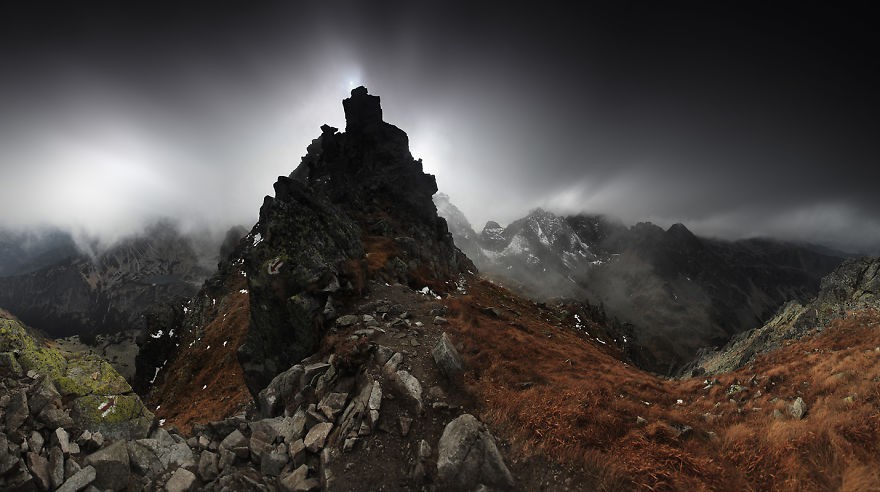 |
| Photo: Karol Nienartowicz |
Before pursuing his photography career, Karol used to be an artist for a few years. He was one of the artists that helped create the scenes in the “Loving Vincent” movie. However, he decided to quit his job and follow his passion to become a photographer and traveler.
Orla Perć (English: Eagle's Path) is a tourist path in the Tatra Mountains in southern Poland. It is considered one of the most difficult and dangerous public paths in the entire Tatras (an equivalent to Grade 2 Scramble) and is, therefore, a suitable route only for experienced climbers. The path is marked with red signs. Since it was established, at least 112 people have lost their lives on the route.
The path was conceived in 1901, the brainchild of Franciszek Nowicki, Polish poet, and mountain guide. The route was partially funded, constructed, and marked by Fr. Walenty Gadowski between 1903 and 1906 with the aid of a few locals; however, the junctions and other auxiliary routes were led and marked by 1911. After several fatal accidents, in 2006 a mountain guide Irena Rubinowska and Piotr Mikucki, a film director, launched an appeal to the authorities of the Tatra National Park to dismount all climbing aids along the path and change it to via ferrata. The appeal met with different reactions from groups and professional lobbies involved in the tourist business. It was concluded that this is a historic trail and will remain unchanged. As many accidents took place when they passed in opposite directions the TPN Directorate has introduced one-way traffic at the most difficult section of Orla Perć from Zawrat to Kozi Wierch in July 2007.
#3. Julian Alps
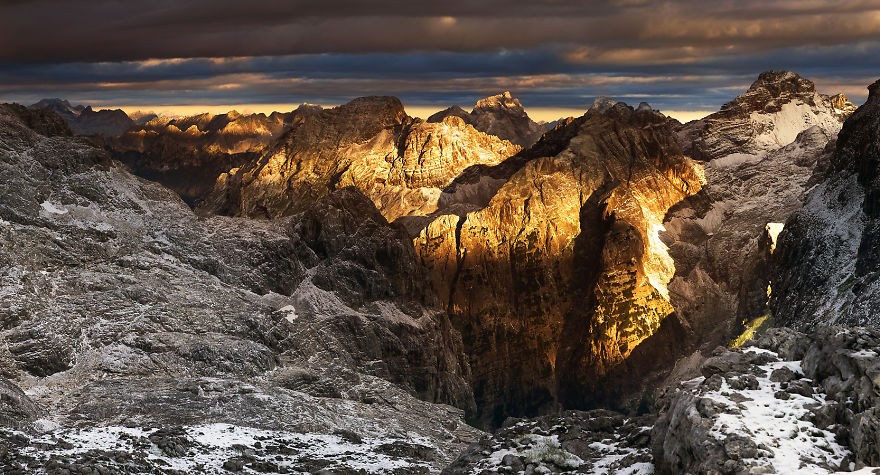 |
| Photo: Karol Nienartowicz |
The mighty peaks, which offer incredible views and crystal-clean water, and which sparkle in the sunshine, are a verdant green landscape whose tranquillity will inspire you and whose energy will uplift you. All this awaits in the sanctuary of the Julian Alps, where the peaks can reach as high as 2500 m and more. The king of this range is Triglav, Slovenia’s highest mountain and the symbol of the Slovenian nation. Experience genuine contact with nature in Triglav National Park, which in addition to high mountains also features picturesque Alpine valleys, rivers, and lakes. The largest of these are Lake Bohinj and the idyllic Lake Bled, with Slovenia’s only natural island. Follow the emerald-green beauty of the Soča River all the way to the vineyard hills of Brda. Put on your hiking shoes and explore the treasure trove of natural beauty in the Julian Alps, according to I Love Slovenia.
The unforgettable backdrop of the Julian Alps attracts all nature lovers. Keep on going higher and higher, through natural arches and mountain passes. Discover the beauties of the Alpine valleys and the uniqueness of the charming Alpine towns.
#4. Santa Maddalena village
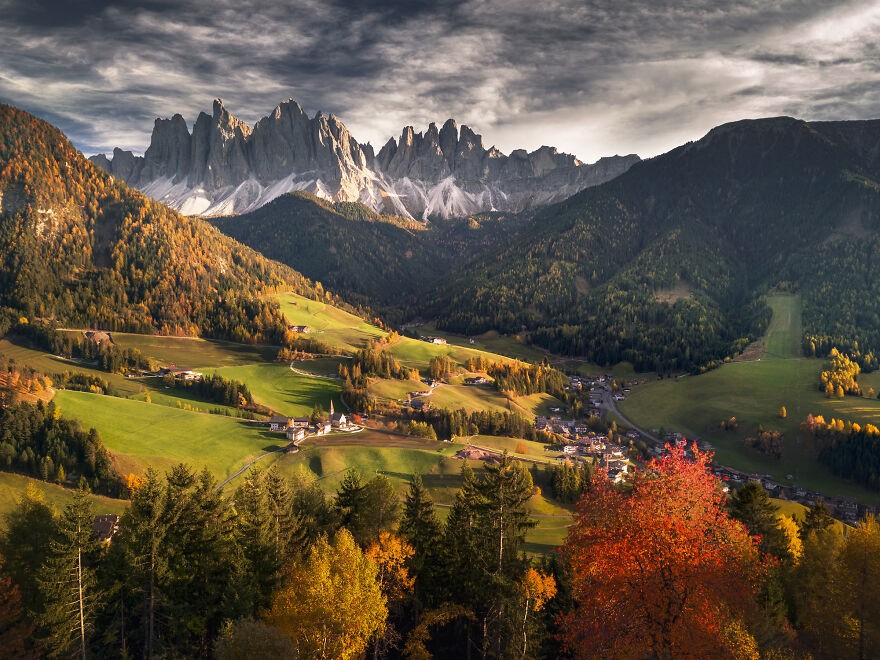 |
| Photo: Karol Nienartowicz |
When most people think of visiting Italy, they think of strolling the streets of a posh city like Rome. Italy is home to countless small villages that are every bit as lovely as Italy’s glamorous big cities. The tiny village of Santa Maddalena—which is located in the shadow of the Dolomites—has all of the charms of Italy’s better-known cities. Onlookers often miss the village of Santa Maddalena because they’re distracted by the beautiful countryside that surrounds it, according to Unusual Places.
The village of Santa Maddalena has a population of a little over 370 people. Santa Maddalena is nestled among towering mountains, fields of wildflowers, and patches of evergreen forest. The Santa Maddalena Church was constructed after an image of Santa Maddalena washed ashore on the banks of a nearby river. The outside of the church of Santa Maddalena is relatively austere, but the inside features an ornate altar, vaulted ceilings, and elaborate paintings by artist Johann M. Pescoller.
#5. Pancava waterfall and Karkonosze Mountains
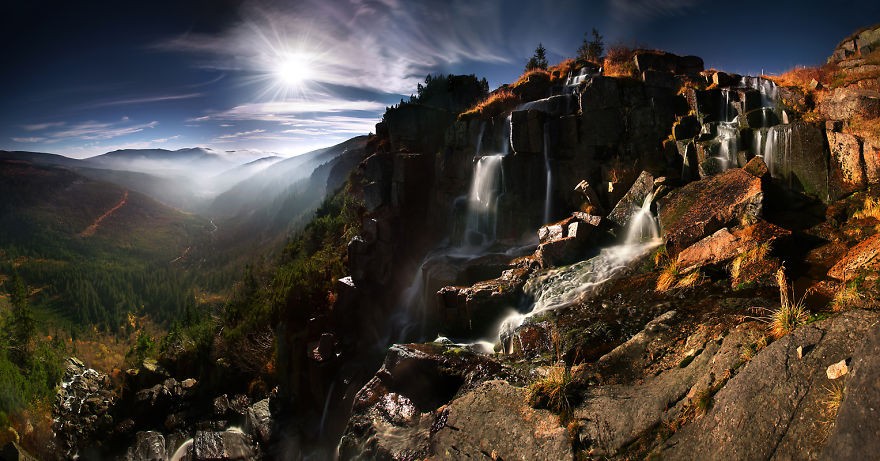 |
| Photo: Karol Nienartowicz |
The name Pančava comes from the German pantschen, ie splashing or splashing. It springs in a peat bog with the remains of the original glacial flora on Pančavská louka, almost on the ridges of the Krkonoše Mountains, but then it breaks sharply on the edge of the Elbe mine and then falls steeply to the bottom of the glacial valley in several steps. This is the Pančava Waterfall, the highest waterfall in the Czech Republic, which is a popular tourist attraction thanks to the views of the Elbe Mine together with the Elbe Waterfall, according to the Giant Mountains.
Although the Pančava waterfall is not rich in water, at 148 meters it is the highest among our waterfalls. The owner of the nearby Labská bouda, Josef Schier, once wanted it to be even more attractive to tourists, so he artificially increased its flow: he built a small reservoir with a sluice and a booth for the attendant above the upper edge. When enough paying tourists had gathered on the nearby observation deck, local staff signaled the trumpet staff upstairs to raise the sluice. Even in the summer months, visitors saw an "improved" waterfall in the form it usually has only at the end of April and the beginning of May, when the snow on the Pančavská and Labská meadows melts.
#6. Hallstatt
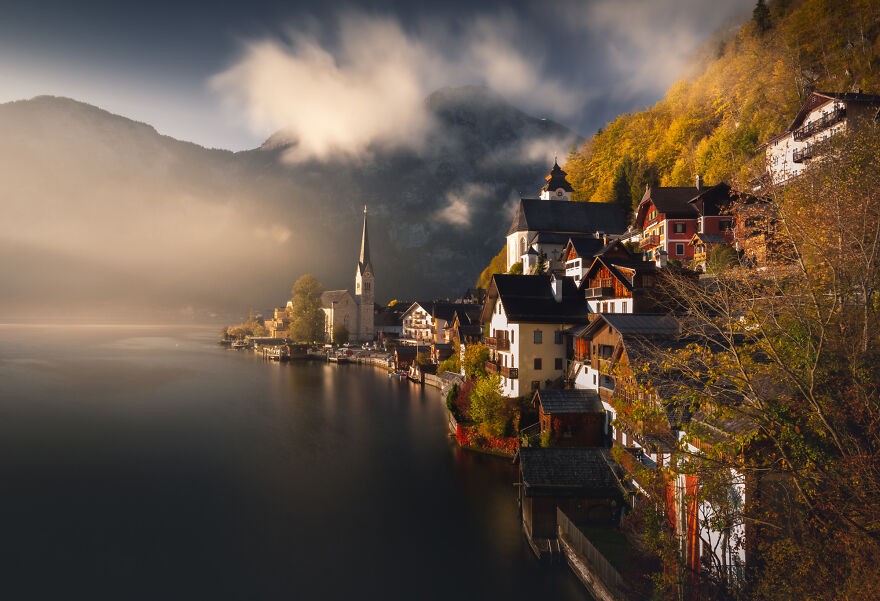 |
| Photo: Karol Nienartowicz |
Hallstatt is a small town in the district of Gmunden, in the Austrian state of Upper Austria. Situated between the southwestern shore of Hallstätter See and the steep slopes of the Dachstein massif, the town lies in the Salzkammergut region, on the national road linking Salzburg and Graz.
Hallstatt is known for its production of salt, dating back to prehistoric times, and gave its name to the Hallstatt culture, the archaeological culture linked to Proto-Celtic and early Celtic people of the Early Iron Age in Europe, c. 800–450 BC.
Hallstatt is at the core of the "Hallstatt-Dachstein/Salzkammergut Cultural Landscape" declared as one of the World Heritage Sites in Austria by UNESCO in 1997. It is an area of over tourism.
#7. Seiser Alm
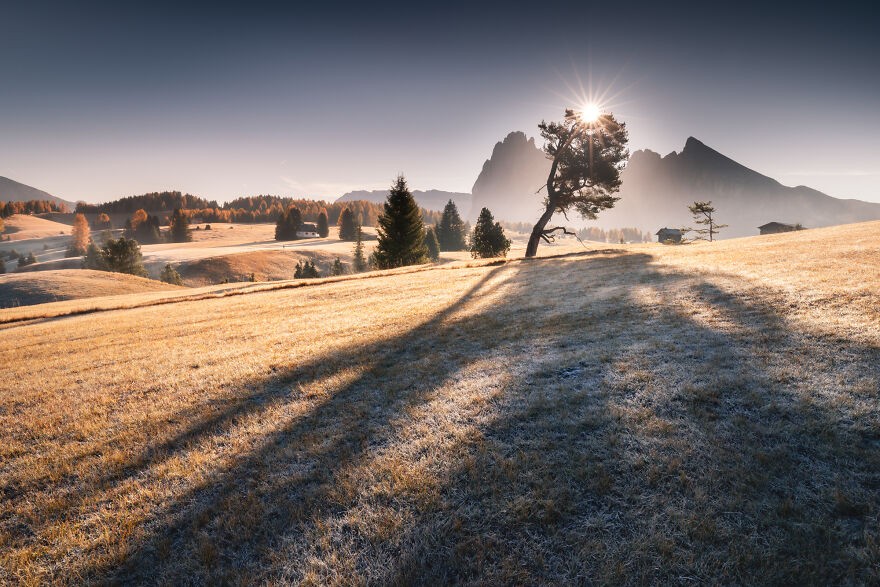 |
| Photo: Karol Nienartowicz |
The area of Seiser Alm extends over about 56 square kilometers, at an altitude between 1680 and 2350 m. In fact, the picturesque Seiser Alm in the South Tyrolean Dolomites is Europe’s largest high-alpine pasture.
The high plateau of Seiser Alm offers a picturesque landscape, varied flora and fauna as well as a vast range of leisure activities in summer and in winter. One part of the sunny Seiser Alm is located inside Schlern-Rosengarten Nature Park.
Many myths and legends are told still today in the Seiser Alm area. For instance, Mt. Schlern is meant to be the meeting point of the Schlern witches, conjuring up storms and being responsible for magic mischief.
Findings of arrowheads suggest that Seiser Alm was a popular hunting territory in the Stone Age. Already in the Bronze Age, the area has used a pasture in summer. Still today, the farmers from the environs, bring their cows, horses, and sheep to the pasture. On the occasion of the transhumance in autumn, there is a big festival you should absolutely see once.
#8. Kamnik-Savinja Alps
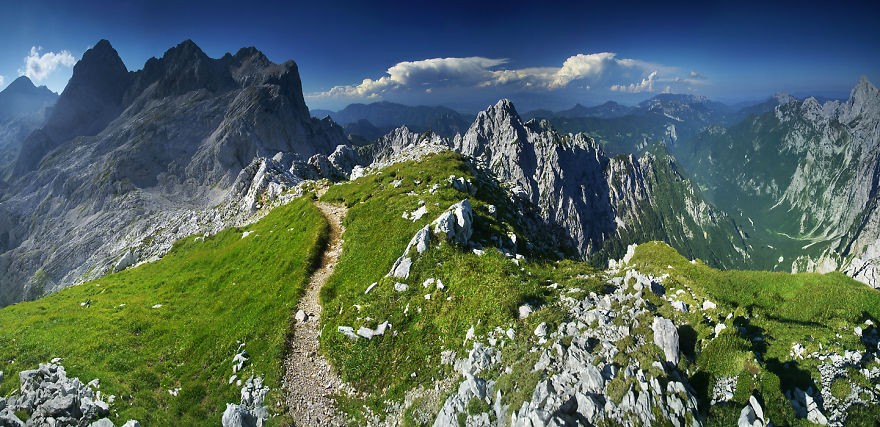 |
| Photo: Karol Nienartowicz |
The Kamnik-Savinja Alps are distinguished by a great variety of reliefs, intermittent plateaus, and deeply carved valleys of glacial or river origin which are characteristic of the heart of this mountain group. A dense network of marked mountain trails criss-crosses the area of the Kamnik-Savinja Alps, leading hikers and mountaineers to mountain cottages, river springs, mountaintops, and various natural and cultural landmarks.
Watersports enthusiasts and adrenalin lovers can enjoy various adventures all year round.
The area offers many possibilities for road and mountain cycling. The landscape is very dynamic and is especially attractive for more demanding and hardy cyclists. At the beginning of July, many cycling enthusiasts come to conquer the famous Alpine Marathon Route which encircles the Kamnik- Savinja Alps. With a length of 130 kilometers and a total ascent of 2000 meters, the route has become a true cycling classic in the Alpe-Adria region.
The Kamnik-Savinja Alps are also attractive in the winter when nature is resting. The snowy slopes are ideal for tobogganing and skiing, and the white meadows invite you to cross-country ski, skate or snowshoe. There is abundant space here for ski touring, along with waterfalls for ice climbers. At every step, children can find opportunities for winter fun.
#9. Starry Night at the Matterhorn
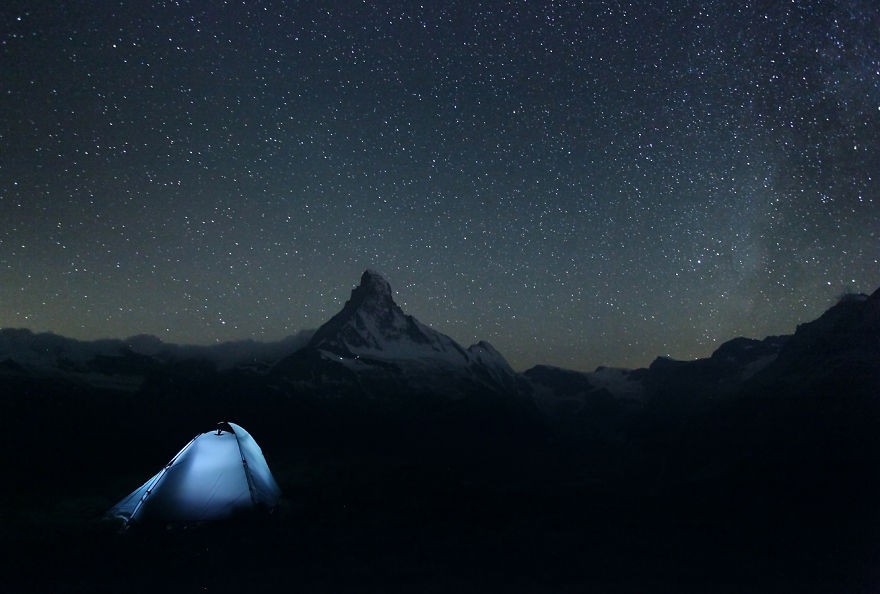 |
| Photo: Karol Nienartowicz |
At 4,478 meters, the majestic Matterhorn – certainly the most famous mountain in Europe – looms over the breathtaking Alpine panorama. This Switzerland landmark is at the border of the western Swiss canton of Valais between Zermatt and the Italian resort of Breuil-Cervinia and offers a paradise for all nature lovers looking for peace and quiet. Its symmetric pyramid shape, the rocky tooth reaching the sky, and the light reflections of the nearby Stellisee make the Matterhorn’s landscape a unique natural spectacle in Zermatt.
There are a wide variety of different attractions to be discovered around the Matterhorn. A top excursion is Gornergrat. On this three-thousand metre mountain ridge there is a viewing platform with a truly unforgettable view of the Matterhorn and the surrounding mountain world. Or if you prefer, the Matterhorn can also be admired from the Rothorn. The Matterhorn glacier paradise is the highest summer ski region in Europe and is open 365 days a year. And there is still plenty to do when the sun isn’t shining! The Matterhorn Museum explains the historical development of Zermatt from a mountain village to an Alpine holiday resort and also has many photographs and facts about the first ascent of the Matterhorn, according to Zermatt Matterhorn.
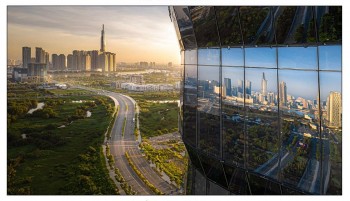 | Exhibition of Photos Winning Ho Chi Minh City's Contest The Ho Chi Minh City Traditional Art Photo Festival, held by the Ho Chi Minh City Photographic Association has recently announced a list of winning ... |
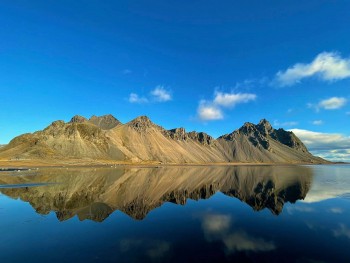 | To A Different World: The Wilderness Beauty of Iceland Through Vietnamese Photographer Setting foot on Iceland, what impresses you most is its incredible scenery and beautiful sight, which was captured through Vietnamese photographer’s lenses. |
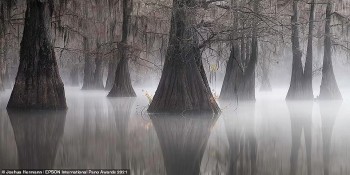 | 2021 Epson International Pano Award Joshua Hermann (USA) surpassed 5,378 works by 1,245 professional photographers from 97 countries to win the Epson International Panorama Photography Award 2021. |
Recommended
 World
World
Thailand Positions Itself As a Global Wellness Destination
 World
World
Indonesia Accelerates Procedures to Join OECD
 World
World
South Korea elects Lee Jae-myung president
 World
World
22nd Shangri-La Dialogue: Japan, Philippines boost defence cooperation
 World
World
Pakistan NCRC report explores emerging child rights issues
 World
World
"India has right to defend herself against terror," says German Foreign Minister, endorses Op Sindoor
 World
World
‘We stand with India’: Japan, UAE back New Delhi over its global outreach against terror
 World
World


